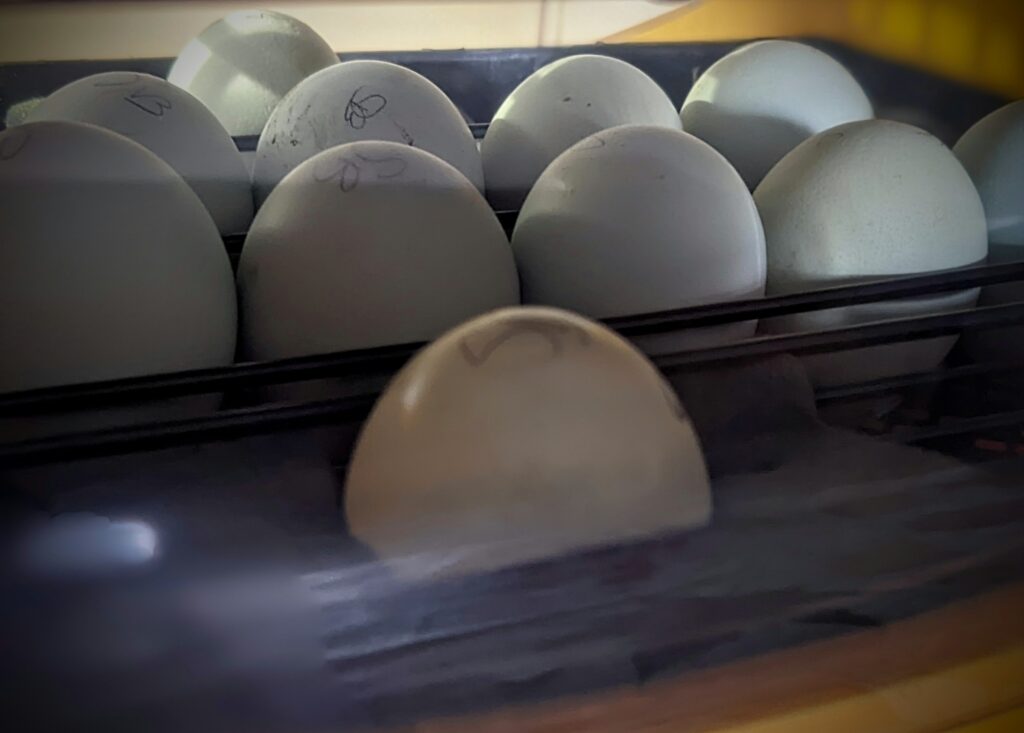
I tried hatching several sets of shipped Lavender Ameraucana (a rare breed that’s not available locally) last year, with dismal results: of three set of eggs from two different breeders, I only had 2 hatch successfully – and that was 1 in each of 2 sets. But those birds are so lovely and sweet that I couldn’t help ordering more eggs – from a breeder in a different state – and hoping for better luck this time!
The breeder I ordered the eggs from shipped the eggs the next day, and they were flown to our local airport. In the past, I would have cringed at the thought of hatching eggs being flown (pressure and temperature changes, cargo handling – you’ve seen how they handle luggage!), but I’ve received eggs flown from other states before and have actually had good hatch rates; in fact, the eggs arrive more quickly and typically appear to have less shipping damage than those moved on USPS trucks.
The eggs arrived at the local Post Office early in the morning and were promptly placed in a parcel locker. I wasn’t able to pick them up until the evening, but the time they spent in the parcel locker should not have exacerbated existing damage; instead, it served as time for the eggs to settle and reach room temperature.
Picking the package up, the box was unscathed, which is only somewhat reassuring – but there are few things as gutting as getting a smashed box, especially when it contains something as fragile as hatching eggs. After a short trip home, the eggs were unwrapped and left to settle overnight. None were obviously damaged.
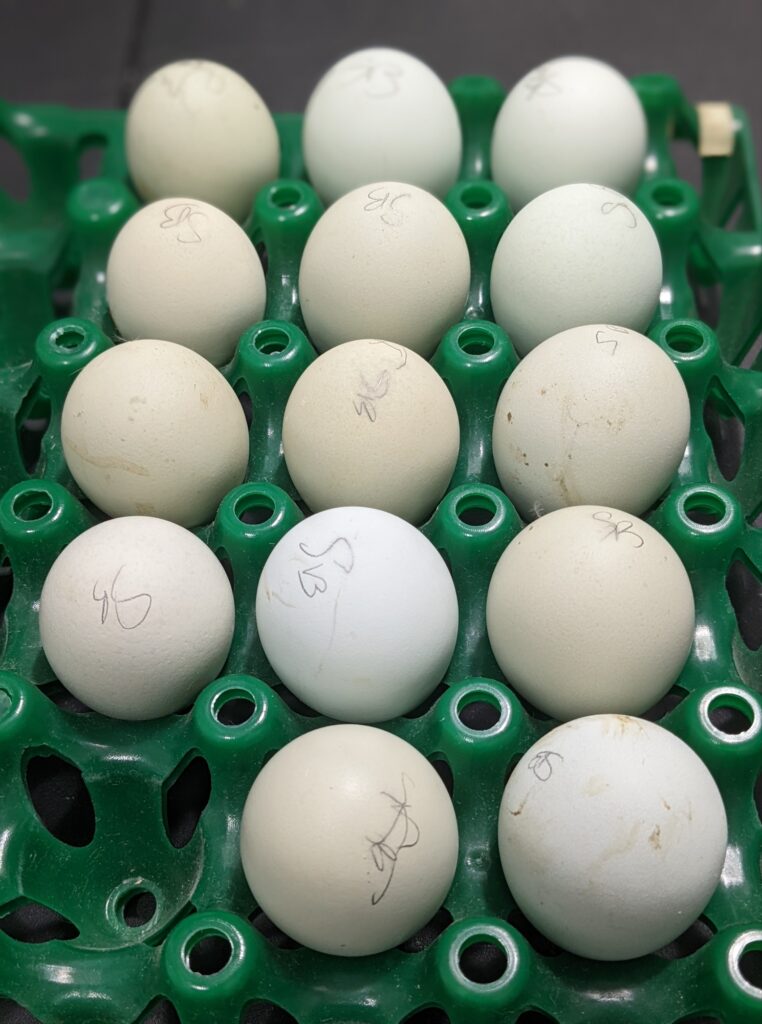
The next day, I candled the eggs. This is where the rubber hits the road: hairline cracks and air cell damage become visible. Each egg, despite being packed in a foam shipper surrounded by packing peanuts and crumpled newspaper, had suffered some degree of air cell damage, indicating that they had been shaken. Significantly.
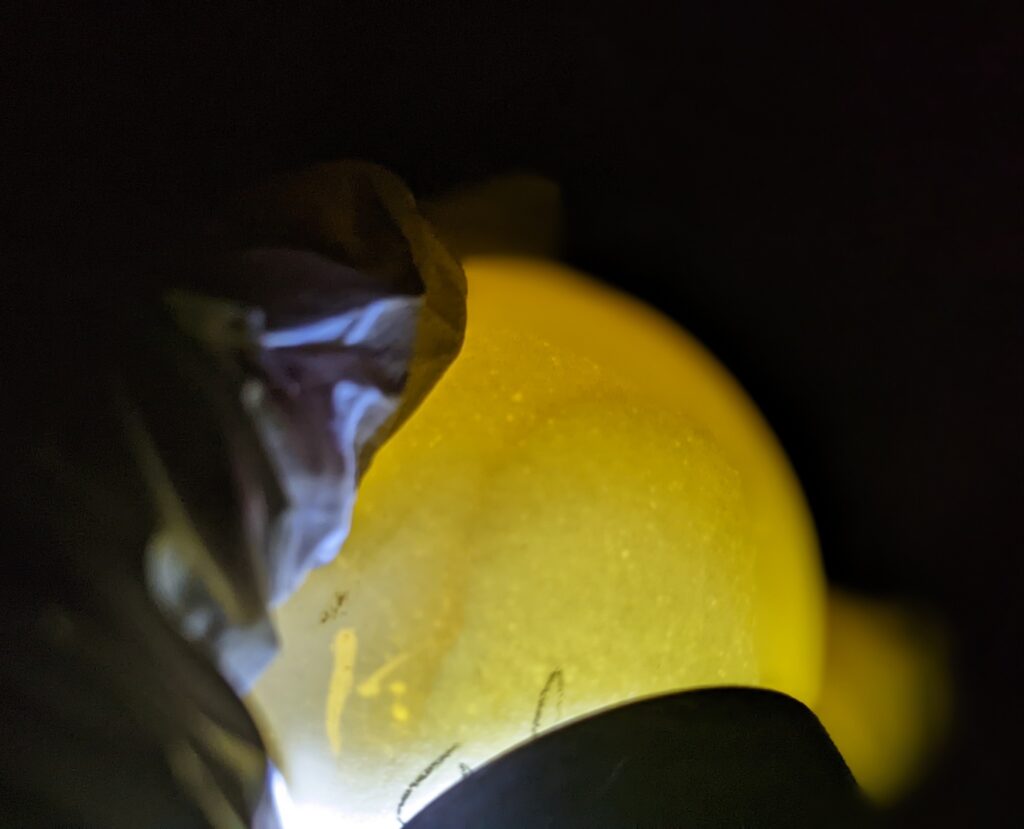
One egg, unfortunately, also had an impact crack that extended across the crown of the egg.
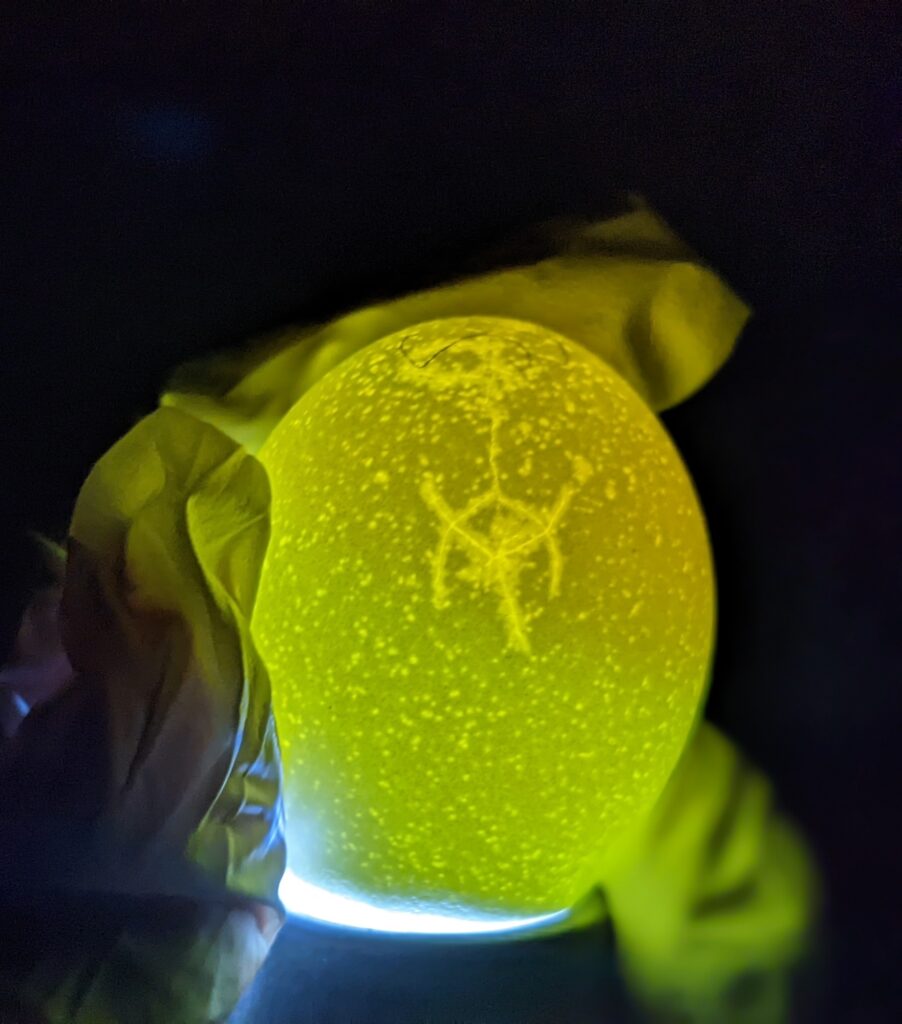
Knowing it likely lost moisture because of the compromised shell integrity, I covered the cracks carefully with Liquid Bandage.
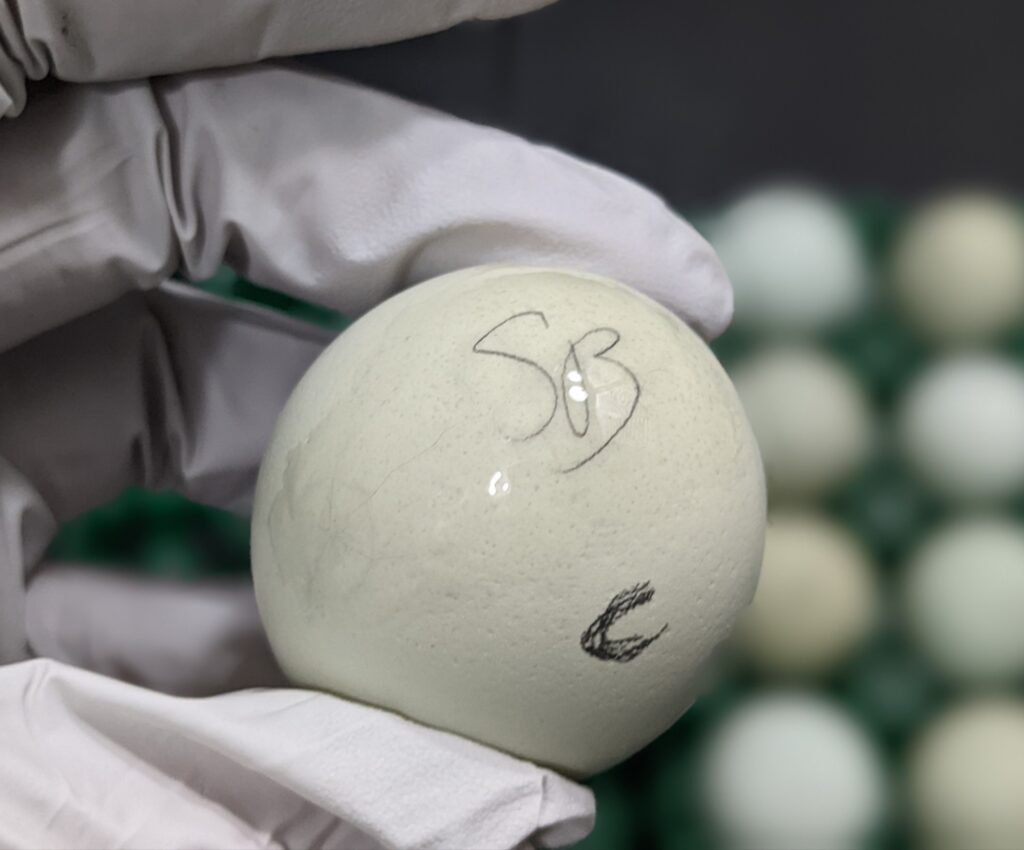
The eggs are now in the incubator, which was prepped for the hatch by being allowed to run for 24 hours so that the temperature could be stabilized. I’m entrusting these valuable eggs to my Brinsea, which has been a workhorse.
As with other shipped eggs, these will require special attention, such as not using an autoturner immediately to allow the air cells to “heal” and return to their normal positions, ideally. Air cells will need to be carefully monitored throughout the incubation to ensure that they’re growing normally (indicating appropriate moisture loss) and adjustments will need to be made as needed; the cracked egg, should it develop, will be monitored very closely for air cell growth.
The most nerve-wracking and risky part of the process, though, is when the eggs go into lockdown and prepare to hatch. This is where too many fully-developed chicks in shipped eggs seem to get malpositioned and can’t hatch without intervention. Last year, I wasn’t able to see that one of the Lavender Ameraucana chicks had internally pipped (in an egg that arrived cracked but was sealed with Liquid Bandage), even with candling, and to my deep disappointment, the chick expired without externally pipping. Fortunately, I was able to see that another chick in that group had internally pipped and assisted its hatch. He is now a big, beautiful cockerel – update on him and the only pullet to hatch to come!
Because some of the air cells in the eggs were “tremulous” (meaning that they move when the egg is moved) when I candled them, I’ll avoid turning the eggs at all for at least a couple of days, then recheck the air cells. Turning is most important in the early stages of incubation, so I’ll begin turning them as soon as it makes sense to do so. It can be a delicate balance with shipping-damaged eggs: turning too soon may prevent the air cells from reattaching properly, but waiting too long to begin turning can also be detrimental to embryonic development. In the end, it’s a judgment call.
Wondering what the difference between Lavender (also called “self blue”) and Blue Ameraucana is? First, they are actually two different colors. Second, Lavender will breed true, meaning that if two Lavender Ameraucanas are bred, all of the offspring will be lavender; with blue, offspring may be blue, black, or splash – even if two Blue Ameraucanas are the parents. Learn more about the difference between lavender and blue here.
Will there be April Fools’ Day chicks on the farm? Stay tuned to find out how the incubation progresses.
